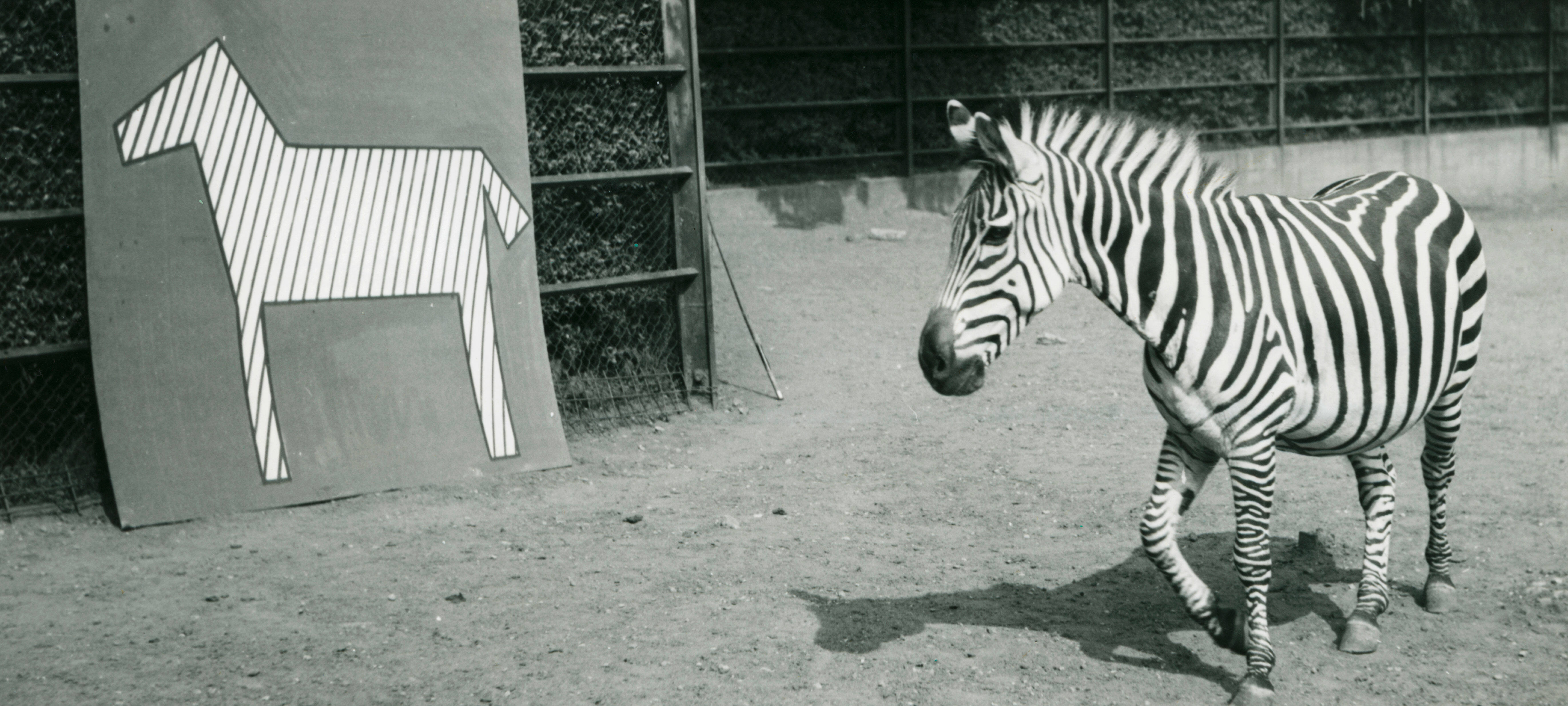Übergordnete Werke und Veranstaltungen
Film programme
Theatre of the Animals
Personen
Media
Chimpanzees in trousers, shirt and tie sitting at tables having to pretend to act like humans is probably a sight familiar to everyone from television series or circuses. Thankfully less well known are scenes in which polar bears sit with their trainers on a stage raising their glasses filled with alcoholic drinks and with apparently jovial mien. Animals trained for circuses and fairs were mainly meant as caricatures of human behaviour. This type of theatre-making continued into early film. Queerosities – Diving Horses is an especially absurd document from the period of high-performance animals in the service of human entertainment, with mounted horses jumping from an approximately ten metre diving board. Even without the high-performance aspect the training casts its shadow onto the image. In Theatre of Animals, a Soviet documentary about a famous Moscow animal show, the animals are presented to the public both in the course of being trained as well as performing. The film disturbingly illustrates why Soviet performing arts schools attained international fame for their work with animals. With Pavlov's reflex theory, the trainers possessed a learning method applicable to all animals. The animals' acrobatic achievements and wagging tales are unable to conceal the element of compulsion in the training. Yet animal training too has its dialectic. Firstly, the tamer quickly learns that you can't work with sick, depressed animals, because only healthy animals are capable of learning. Secondly, the trainability of animals provided the possibility of including them in the human world. The film Die Hinrichtung des wildgewordenen Riesenelefanten Arno (The Execution of the Rogue Elephant Arno), made in Germany from 1910-1914, is an example of this. The elephant, sentenced to death for his crimes against humans, has not yet been expelled from human jurisdiction. Into the 18th century, animals that had been responsible for a human death, such as horses, were tried and executed according to the same law humans who had committed the same acts were subject to. Do not misunderstand; this is naturally atrocious and condemnable, as is every death sentence. The point, however, is that in this cruel film the "racist exclusion of animals from the human world", as the philosopher Jean Baudrillard refers to it, has not yet been consummated. The animals still belong to this world thanks to their misdeeds. The cheapest way to approach this case would be to claim that animals cannot be penalised in this way because our sort of conscious responsibility cannot be conferred on them. Although this is entirely true it leaves the problems unsolved. The resolution of the conflicts both over the keeping of animals and the death sentence could lie in a story about Albert Camus. The story is related by the writer J. M. Coetzee in order to contradict the claim that animals are too deaf and dumb to speak for themselves. As a small boy, Camus had to fetch a hen from the coop for his grandmother and then stand by and watch as she cut its head off with the kitchen knife. The hen's death screams made such an impression on him that he wrote an article against the guillotine in 1958 that played a part in the abolition of the death penalty in France. Coetzee ends the episode with the words "who would now claim that the hen had not spoken?"
In this programme the films trace the development of animal taming up to the emergence of the critique against it. In his interactions with his Weimaraner, Man Ray, the artist William Wegman unsuccessfully attempts to teach his dog to smoke. The conclusion to be drawn from this film and from the whole programme is that animals are best left out of this type of training.






